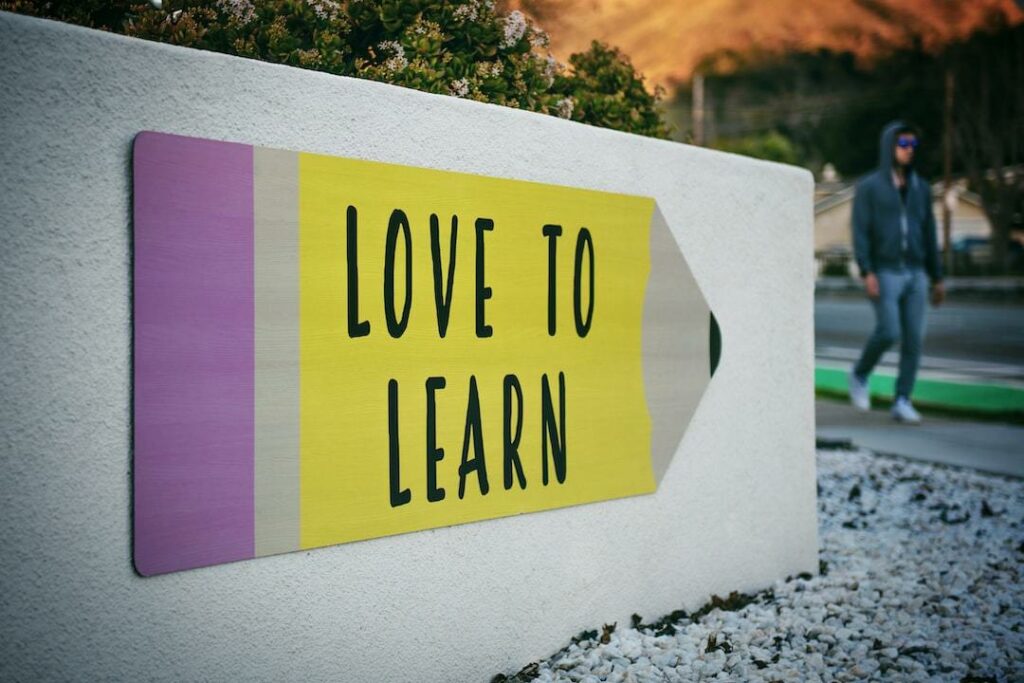
Leadership Development Trends Shaping Tomorrow’s Businesses
Leadership Development Trends Shaping Tomorrow’s Businesses
Have you ever stood at the edge of a high cliff, looking down at the roaring waves below? That’s how it feels when we face leadership development challenges.
We’re in a time where the traditional methods of guidance don’t suffice anymore.
The path to effective leadership development isn’t marked or well-trodden like before. We need new skills, new tools, and, yes – even a new mindset.
So, what does this evolving leadership development trend landscape look like?
Think remote teams scattered across time zones. Picture yourself developing soft skills that were previously undervalued but are now crucial for success.
So, what are we waiting for? Let’s dive into leadership development trends and make the most of it!
Table Of Contents:
- Leadership Development Trends Shaping Tomorrow’s Businesses
The Reasons
Let’s tackle the question that might be on your mind: Why is leadership development trending?
With the advent of remote work, the landscape of business and management has evolved drastically over recent years.
A growing emphasis on personal growth, not just for individuals but also within organizations, must be addressed. This surge in self-development reflects an increasing desire to improve ourselves and others.
In turn, it helps businesses flourish as well-rounded teams lead the way forward.
Next up is the looming ‘Talent Cliff.’ A term coined by HR professionals represents the predicted shortfall in skilled labor due to demographic changes like aging populations.
So, investing more resources into nurturing homegrown talent becomes crucial for survival.
Soft skills are taking center stage now more than ever before. According to McKinsey, leaders who communicate effectively and empathize with their team members will likely drive better results than those who don’t.
- We’ve seen remote work becoming commonplace since 2020.
- The rise of flexible working arrangements demands new forms of leadership.
- And lastly, a shift towards blended learning methods – combining traditional face-to-face instruction with online materials – when developing leaders.
All these factors make it clear: the push for leadership development isn’t just a trend but an essential strategy to ensure business growth and resilience in today’s dynamic market conditions.
Increasing need to develop ourselves & others
The modern business landscape has dramatically changed.
With the rise of remote work and digital innovation, it’s not just about staying afloat but excelling in this sea of change. So, how do we navigate? By developing ourselves and those around us.
Leadership development isn’t just a trend – it’s an imperative. Why the focus on improvement?
- We live in a knowledge-based economy where continuous learning can give you a competitive edge.
- Digital disruption (think artificial intelligence) means new skills are needed faster than ever.
- The rapid pace of change makes adaptability crucial for survival and success.
Take McKinsey’s report, highlighting that by 2030, up to 375 million workers will need to switch occupations or acquire new skills because their old jobs will no longer exist.
To stay ahead, you must invest more in personal development programs focusing on soft skill mastery like communication, critical thinking, emotional intelligence, etc., rather than solely technical competencies.
This approach doesn’t just help individuals grow professionally but also contributes positively towards company culture, fostering higher employee engagement levels and improving overall productivity.
Approaching the “Talent Cliff”
We’re facing a precarious situation regarding talent, and it’s essential to act swiftly. Why? A multitude of people are resigning from their occupations now more than ever.
The Bureau of Labor Statistics reports that in 2023 alone, an average of about 4 million Americans quit their job each month.
This mass exodus is affecting more than just large corporations and small businesses. Companies must offer more than competitive salaries or great benefits – employees also want growth opportunities.
The term “talent cliff” refers to this looming crisis where demand for skilled leaders outpaces supply, causing organizations to scramble to fill essential roles.
Let’s start rethinking our approach now.
- We need better leadership development programs that give team members clear paths forward.
- We should use performance data and feedback loops effectively so everyone knows how they’re doing and what they need to work on next.
- Fostering an inclusive culture can also bring fresh perspectives into decision-making processes. (Hey, diversity is pretty cool, right?)
Acknowledging the talent cliff doesn’t mean accepting defeat; instead, it’s taking control of your organization’s future by preparing today with effective leadership development strategies.
Shifting focus to the development of soft skills
The business landscape is evolving, and more than hard skills like strategic planning and financial analysis are required.
We need to give more attention to soft skills—those intangible qualities that can’t be measured but make a world of difference.
We’re not saying you should neglect hard skills—they’re essential—but let’s face it: they can often be learned quickly or outsourced if necessary. Soft skills? Not quite so simple.
- Empathy: In today’s diverse workplace, understanding others’ perspectives helps foster inclusivity.
- Creativity: With rapid technological changes come new challenges—and creative solutions become vital.
- Flexibility: To adapt swiftly amidst uncertainty—a defining feature of modern businesses—is an invaluable skill.
With the wave of “quiet quitting,” it’s no wonder companies are shifting their focus toward these abilities.
They’ve seen firsthand how nurturing them within leadership boosts morale and productivity across all levels—an aspect supported by Forbes’ survey findings on employee motivation.
If we want our businesses to thrive in this fast-paced digital era—we must invest time into developing these “soft” aspects. We must take advantage of the potential benefits of investing in leadership development initiatives focusing on softer skills.
Remote and Flexible Working
Modern business landscapes have significantly shifted to remote and flexible (often called “hybrid work”) working. What’s the fuss all about?
A Gallup report shows that employees who spend at least some time working remotely are likelier to be engaged in their jobs. The same report indicates that those with some flexibility are less likely to experience burnout.
This work arrangement can give us more control over our schedules, allowing for improved work-life balance. Just imagine skipping the rush-hour traffic or having more time for family dinners.
- You get to tailor your workspace just how you like it – say goodbye to office distractions.
- You’ll also save money on commuting costs – every penny counts.
- No need for formal wear – celebrate “Casual Everyday.”
The switch isn’t all sunshine and rainbows, though. Challenges such as isolation, lack of social interaction, and potential overwork exist too. So, here is where heads of teams need to step up and be mindful of employee wellbeing.
Maintaining Productivity & Engagement Remotely
To keep teams productive while maintaining high morale requires thoughtful strategies from leaders. Regular check-ins via video conferencing tools (like Zoom or Microsoft Teams) is one approach that helps maintain connection among team members even when they’re miles apart.
As we navigate the remote work landscape, it’s clear that leadership must evolve too. It’s no longer about clocking in and out—it’s about trust, communication, and results.
We want to design the work culture using new leadership practices for the new hybrid workplace.
Adopting a blended approach to leadership and management development
There needs to be more than the old-fashioned, cookie-cutter leadership style. But, with the rise of remote work and increased emphasis on soft skills, mental health, and communication skills, a more versatile strategy is needed.
A Gallup study shows managers account for a 70% variance in team engagement. This means good leaders can inspire teams to reach their full potential.
This brings us to blending various learning styles into your leadership skills training programs. It’s about creating an environment where every type of learner feels included.
- To start with, try incorporating interactive elements like group discussions or role-playing exercises, which allow learners to participate rather than just passively absorb information actively.
- Digital resources such as webinars or online courses can also be helpful for those who prefer self-paced learning.
- Last, don’t forget mentorship opportunities that provide hands-on experience under expert guidance.
Innovation should not stop at products; it must also permeate your company culture. The goal is the continuous development of team members while considering the needs of those engaging in remote work.
So why wait?
Let’s shake up our old-school methods and embrace this dynamic approach.
FAQs in Relation to Leadership Development Trends
What is trending in leadership and development?
The trend leans toward developing soft skills like empathy and communication. Also, a blended approach to management is on the rise.
What is the trend in leadership in 2023?
In 2023, we foresee more remote working leading leaders to adapt their strategies for dispersed teams. Personal growth will also be emphasized.
What are the future leadership trends in 2023?
Apart from adapting to remote work environments, there will likely be an increased focus on employee well-being and resilience training.
What are the leadership development priorities for 2023?
Priorities include enhancing emotional intelligence, promoting inclusivity and diversity at workspaces, and nurturing creativity & innovation among team members.
Conclusion
Leadership development trends are shaping our world. They’re making us rethink how we grow as leaders.
We recognize the need to invest in ourselves and others, tackling that looming ‘Talent Cliff’ head-on.
We’ve seen the power of soft skills come to life and watched as they become key drivers for success.
Flexible working is no longer a perk but an expectation. And it’s reshaping how we lead teams scattered across time zones.
A blended approach to leadership? It’s not just a trend – it’s a necessity in this rapidly changing business landscape.
About the Author Cindy Constable
Culture must be created, grown, and sustained by design over the long term. Cindy is a Culture Transformation Specialist for corporations. She uses a restorative process called A.I.R.R. to elevate your company culture and bring integration between your leadership, vision, culture, and team members to enhance overall performance.

